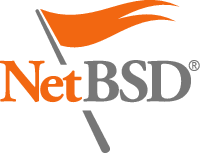NetBSD Commit Guidelines
-
If you commit code that was not written by yourself, double check that the license on that code permits import into the NetBSD source repository, and permits free distribution. Check with the author(s) of the code, make sure that they were the sole author of the code and verify with them that they did not copy any other code.
Code generated by a large language model or similar technology, such as GitHub/Microsoft's Copilot, OpenAI's ChatGPT, or Facebook/Meta's Code Llama, is presumed to be tainted code, and must not be committed without prior written approval by core.
-
Do not commit code from a tree checked out from anywhere but from cvs.NetBSD.org. Note that all developers have access to the private rsync-over-ssh service on cvs.NetBSD.org.
-
-
"Obvious" fixes can be committed without any prior discussion or review. (The definition of "obvious" in the GCC Project is: "could not possibly cause anyone to object." We adopt this definition here)
-
All other (i. e. "non-obvious") fixes should have a review.
-
Implementing (significant) new features requires a prior discussion on an appropriate technical mailing list.
-
Adding a completely new package (e.g. openldap) requires prior discussion on a mailing list and approval from core.
-
-
Make sure that your code actually works as expected, by compiling and running the code that is affected by your change with your system's tools. If you changed a man page, make sure that groff/nroff creates the formatted man page you expect.
For normal commits (to the trunk), test that your code works on -current. Prior to requesting a pull-up to a branch, test the very changes you will request from releng on the respective release branch.
Run all relevant tests from
/usr/testsor ideally the whole test suite. Check the daily builds and the automated test runs. Long-term regressions (build breakage or failing tests) are not acceptable and changes causing such will be backed out if the regressions are not addressed. -
Do those separately (apart from the general requirement that changes be made in such a way that it is easy to discern what each fix did, as described in item 6, there will be pullup issues with largely changed files from trunk->branch when mixing whitespace with functionality fixes).
-
Detail to some degree what was changed and why. This doesn't need to be a code review/walkthrough but it should be informative to someone reading the log and looking over the diff in 6 months. The focus should be on "why" since the target audience reading the logs can usually figure out "what" from looking the diffs. As an exercise, consider the difference of usefulness between "set i to 1" and "initialize iterator correctly to fix a rarely triggering bug in memory handling".
Also, "fixed some stuff" or "cvs-1.10.0" isn't informative whereas the following example is:
"Print useful line number on error while executing .for directive."If your change fixes a PR, document it with an appropriate message. Using the template “PR category/bug-id” in your commit message will also append it to the respective problem report in our bug database:
"Closes PR bin/6666"If your code has been reviewed by someone else, document this:
"Reviewed by <mrg>"(Please note that a good commit log doesn't relieve the need for good documentation in the program itself.)
-
If you commit code that had been submitted in a PR, give proper credit, like:
"Code submitted in PR lib/393939 by Joe Doe"Since the commit messages will eventually appear on the source-changes mailing list which is also available via web, specifying the e-mail addresses of the PR submitter should generally be avoided.
If you took code from an other Open Source Project, give credit, like:
"From FreeBSD" -
If you do not agree with another developer's commit, do not revert it on your own. Contact the other developer and explain to him or her the issues you have with the commit in question. Ask the other developer to back out the changes instead of doing it yourself.
If no agreement can be reached, contact the Core Team <[email protected]>, which will serve as mediation authority.
